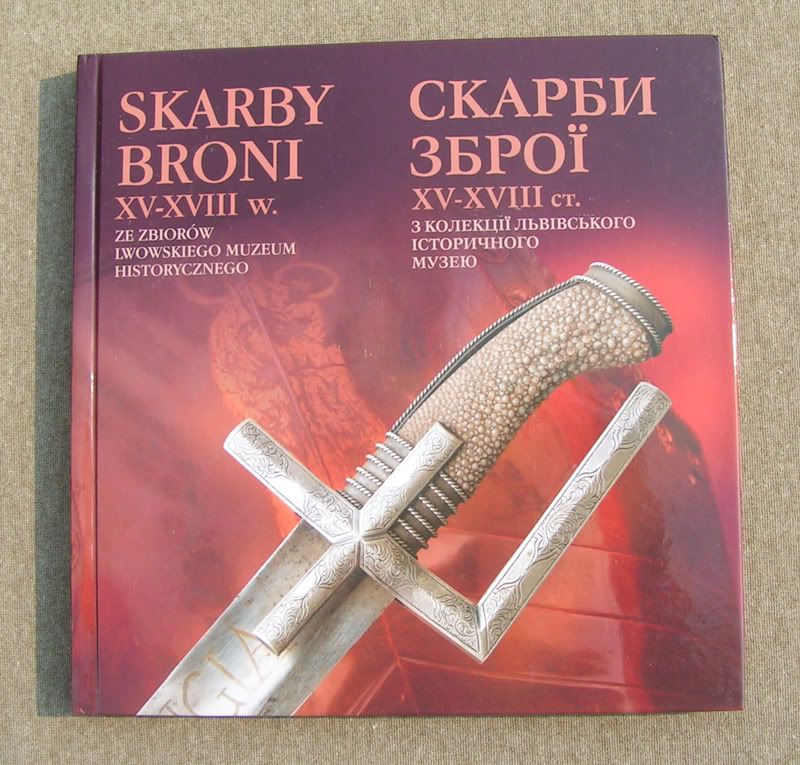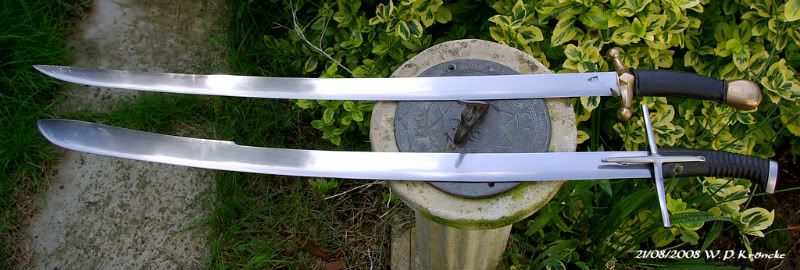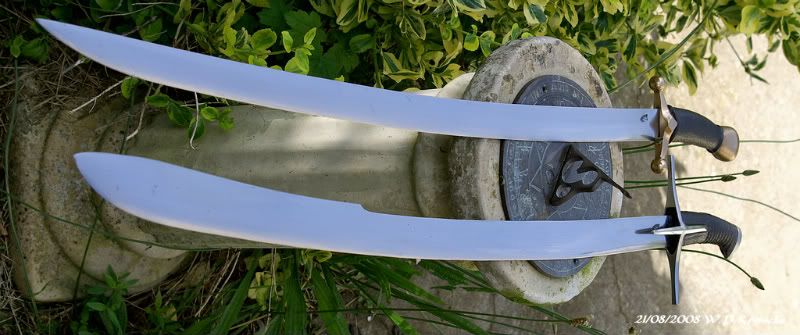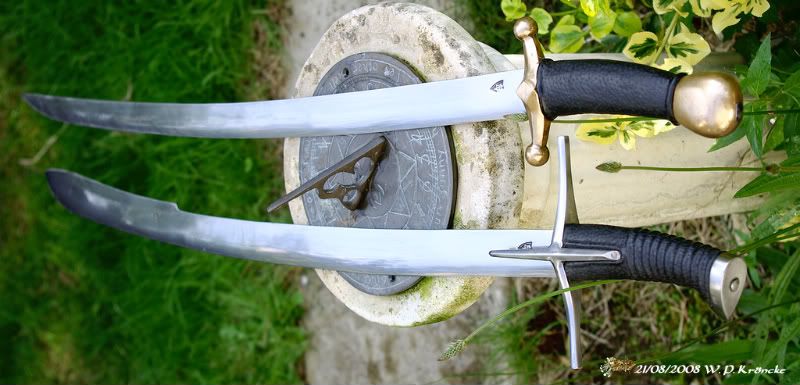
 |
|
|
#1 |
|
Member
Join Date: May 2007
Posts: 20
|
Can anyone share any examples of sabers with L-shaped open guards? It's a form I've seen in many sketches and diagrams but not many actual examples of. As I understand it, it's more of a 17th c style? Is it a distinctly Polish form?
Some information from those familiar in this field would be greatly appreciated. Thanks 
Last edited by P.Abrera; 19th August 2008 at 12:42 AM. |
|
|

|
|
|
#2 |
|
Arms Historian
Join Date: Dec 2004
Location: Route 66
Posts: 9,942
|
I have been hoping that Michal would be responding to this, as he is resoundingly the authority in this field with his work in the National Museum in Krakow. He also is the author of the magnificent work (posted on our site) "Eastern Influences on Polish Arms" (2007).
I have always been very interested in Polish sabres, beginning many years ago with fascination with the Polish "Winged Hussars" prompted by the classic work on them by Professor Zygulski. While I am hoping that someone will post examples here of these distinctive 'L' hilt sabres, I hope everyone will indulge my usual compulsion to find information on them. In "Cut and Thrust Weapons" (Eduard Wagner, 1967, Prague), on p.212, the author shows one of these L guard sabres as Polish 17th century, and in text on p.204, indicates that "...the perpandicular bar at the end of the right arm of the crossguard gives an indication of the later development of the curved guard common on sabres of the hussars of the 18th and 19th c.". On p.400 (plate 30) an illustration of an Austrian version of one of these is shown as of late 17th century, suggesting the possible influence of the earlier Polish versions. In the excavations of the battlefield at Beresteczko where the Polish defeated Cossacks in 1651, there were a large number of items of the Cossacks found including swords. Of these there were a number of those L guard sabres, and it should be noted that the Zaporozhian Cossacks in the Ukraine were primarily of Polish-Lithuanian descent, still quite influenced in varying degree with equally varying forms of contact. It is quite possible, if not likely, that these L guard sabres were captured from the Polish in some of those contacts. While it is suggested that these L guards were superceded by closed stirrup hilt or D shape guards, I did find one example shown in a Polish museum catalog that was silver hilted with fishskin grip and seemed to be more of ceremonial or parade quality, and stated of 18th century. In discovering whether this style guard was a Polish innovation, it should be noted that the presence of Venice in trade contact was quite prevalent in southern Polish centers such as Lvov and Krakow in 16th c. In reviewing the swept up knuckleguard of L shape, this feature is seen in developing Italian sword hilts from the 15th and into 16th c. The Polish-Hungarian style sabres with open hilts and unusually wide quillons on the straight crossguards were predominant in those times as these open hilt sabres superceded the standard straight broadswords through Eastern influences. It would seem that developing sword making centers in Poland likely adopted the style of the L guard to thier sabres from Italian fashion. |
|
|

|
|
|
#3 | |
|
Member
Join Date: May 2007
Posts: 20
|
Thanks Jim, very helpful leads to study up on.
Quote:

|
|
|
|

|
|
|
#4 |
|
Member
Join Date: Mar 2006
Location: Room 101, Glos. UK
Posts: 4,181
|
a picture saves a thousand words.
do you mean like this 16-17c. magyar Végvári szablya  (this is a modern repro based on a museum piece in hungary) Last edited by kronckew; 20th August 2008 at 04:03 PM. |
|
|

|
|
|
#5 |
|
Arms Historian
Join Date: Dec 2004
Location: Route 66
Posts: 9,942
|
Thanks very much Kronckew!! That is indeed a well carried out representation of the sabres we're talking about. Very pretty!

|
|
|

|
|
|
#6 |
|
Member
Join Date: May 2007
Posts: 20
|
Yup, thats a good one. Thatnks for sharing
 I like the assymetry of the guard's thick/thin sections. Very nice. Does it belong to you kronckew? I like the assymetry of the guard's thick/thin sections. Very nice. Does it belong to you kronckew?I believe this is the "parade" saber we spoke of? 
|
|
|

|
|
|
#7 |
|
Member
Join Date: Mar 2006
Location: Room 101, Glos. UK
Posts: 4,181
|
i'm afraid i've not been able to buy that one yet, but i do have the (top) 9c. & (bottom) 16c. flavours, they're from Viktor Berbekucz in hungary...no fancy fullers, modern steel, razor sharp, built as users...
 from point  from grip  i personally think the 9c one feels better in the hand, the 16c one is more of a chopper. not sure how well they duplicate the feel of a real one of the time, but i can't afford a real one 
|
|
|

|
|
|
#8 | |
|
Arms Historian
Join Date: Dec 2004
Location: Route 66
Posts: 9,942
|
Quote:
That is exactly the parade sabre and book I was describing! Thank you! I dont speak Russian nor Polish so I couldnt add much, other than note the illustration. |
|
|
|

|
 |
|
|